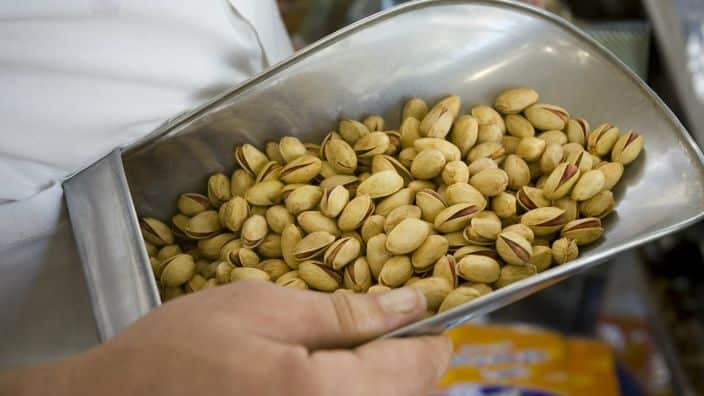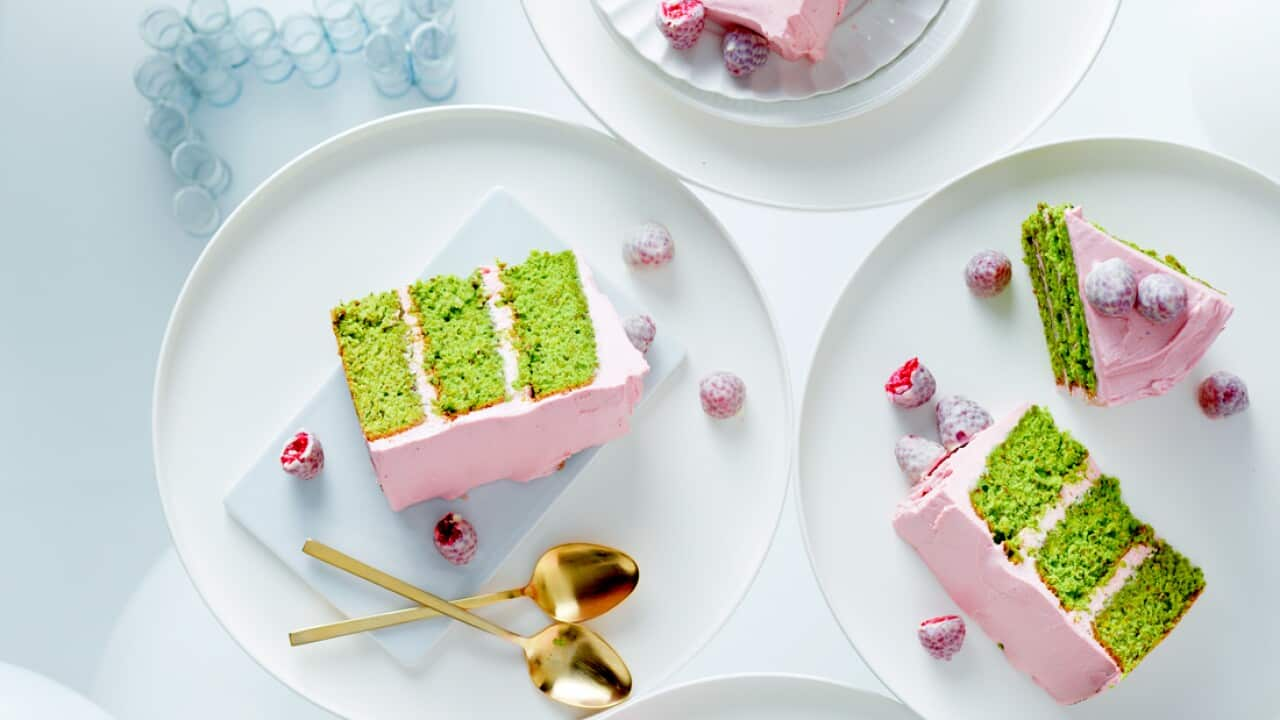It’s the bright-green nut that makes everything look cheerier. In some countries, it is also known as the ‘smiling’ or ‘happy’ nut – indeed, when the hard casing splits, it can look like a smiling face.
But this is a nut that offers more than good looks. It’s a nutritional powerhouse, and even a world champion!
Here are eight things you might not know about this ingredient.

Pistachios may be small, but they contain many surprising features. (Getty Images) Source: Getty Images
1. It's not actually a nut.
Tough and nutritionally potent, pistachios do well in the dry climates of inland Australia. While we call them nuts, pistachios are the seeds of a fruit that grows in bundles (like grapes). Once the fruit is wrinkled and soft, each pistachio is harvested and when fully ripened, its shell will split, exposing the nut inside.
2. The reason why they're bright green ...
Pistachios look great on the Christmas table (as well as all kinds of dishes), thanks to their many shades of green. The green colouring comes from the natural plant pigment, chlorophyll, which is the same green pigment found in fruits and vegetables like peas, cucumber and celery.

This pistachio cake with vanilla syrup and raspberry mascarpone uses food dye to enhance the bright-green appeal of the nut. (Mark Roper) Source: Mark Roper
3. They pack a nutritional punch.
Pistachios are a plant source of protein and contain essential vitamins and minerals like B6, thiamin, copper and phosphorus - and they are jam-packed with potassium. They are also a good source of antioxidants. Although they are predominantly green, these nuts also have a hint of purple in the kernel which comes from the antioxidant anthocyanin. Anthocyanins are powerful antioxidants which help to protect our cells from damage. Pistachios are rich in monosaturated fats (the good type of fat!) and this type of fat has been found to support heart health by lowering LDL (bad) cholesterol, blood pressure and inflammation. One fascinating study found that consuming two or three serves (½–¾ cup) of pistachios daily improved the heart health of participants compared to people following a low-fat diet.
4. They are grown in Australia.
Pistachios have been growing in the Middle East for thousands of years (in fact, they've been found at Jarmo, an archaeological site from 6750BC - known as one of the earliest farming communities in the world - which is located in modern Iraq). In the late 1980s, Australian farmers took on the challenge to farm this crop and in the late 1990s, pistachios were readily available around the country. Current production in Australia averages about 1800 tonnes per year. However, Australians consume on average 3500 tonnes per year, meaning a good chunk of our supply is imported from other countries like the USA, Iran and Turkey.
In some countries, it is also known as the ‘smiling’ or ‘happy’ nut – indeed, when the hard casing splits, it can look like a smiling face.
5. They are good for blood-glucose levels.
Pistachios are a low-GI food, meaning they help to keep blood glucose levels stable and also make you feel fuller for longer. Some research has found that the healthy fats and protective compounds in pistachios may help improve blood-glucose control over time and help maintain healthy blood glucose levels. Plus, when we shell them ourselves, we are likely to consume less.
6. You get more nuts per serve.
Pistachios are one of the lowest-calorie nuts. This means that the kilojoules in 49 pistachios is equivalent to just 23 almonds! This means that you can have more per serving compared to pretty much any other nut. Who doesn’t like that?
7. They may help to protect against age-related vision loss.
Pistachios are also rich in the phytochemicals lutein and zeaxanthin, which may protect against age-related vision loss.
8. They are the key ingredient in the 2017 World Champion Gelato.Just in case you weren’t convinced that you should be including these little beauties in your diet, then take note of the top gelato flavour in the world - chosen after three years of elimination rounds. The winner was a slow-toasted Sicilian pistachio gelato from Italy. What more can I say?
Of course, there is no need to go nuts by only eating pistachios! All nuts have fantastic health properties and should be combined with a healthy diet. (And for anyone who can’t eat nuts, there's always our nut-free recipe collection.)
Melanie McGrice is an Advanced Accredited Practising Dietitian.
Share
SBS Food is a 24/7 foodie channel for all Australians, with a focus on simple, authentic and everyday food inspiration from cultures everywhere. NSW stream only. Read more about SBS Food
Have a story or comment? Contact Us






